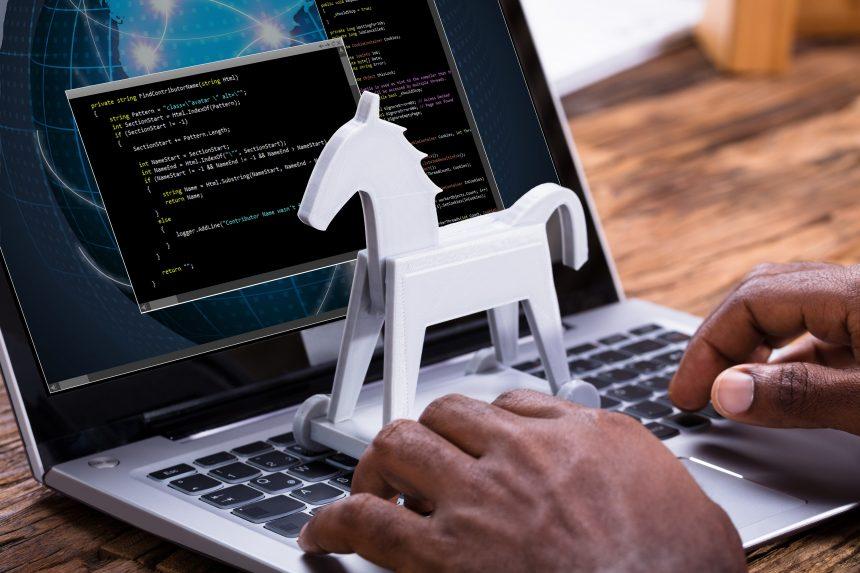Lumar is a dangerous piece of malware categorized as a Trojan and a stealer-type malware. It is designed to stealthily infiltrate systems and steal sensitive information, including login credentials, cryptocurrency wallets, and various files. Below is a comprehensive removal guide for Lumar, including details about its threat type, detection names, distribution methods, and the damage it can cause to systems.
Threat Type
Lumar is classified as a Trojan and a stealer-type malware. It operates quietly, often without any visible symptoms, making it challenging for users to detect its presence on their systems.
Trojans, in the context of computer security, are a type of malicious software (malware) that masquerade as legitimate software or files to trick users into executing or downloading them. They are named after the famous Trojan Horse from Greek mythology, which concealed soldiers inside a large wooden horse to gain access to the city of Troy.
Some of the key characteristics of Trojans are their deceptive appearance, looking like useful software; unauthorized access; payloads – trojans can carry viruses, spyware, key loggers, and more; persistence; data theft; and remote control.
Protecting your computer and personal information from Trojans involves using antivirus and antimalware software, keeping your operating system and software up to date, being cautious with email attachments and downloads, and practicing good cybersecurity hygiene.
It’s important to note that Trojans are just one type of malware, and there are various other types of malicious software with different characteristics and functions, such as viruses, worms, and ransomware.
Detection Names
Different security software and antivirus programs may detect Lumar using various names. Some known detection names include:
- Avast: Win32:CrypterX-gen [Trj]
- Combo Cleaner: Gen:Variant.Doina.61700
- ESET-NOD32: Win32/Spy.Agent.QKK
- Kaspersky: Trojan-PSW.Win32.Lumar.a
- Microsoft: Trojan:Win32/PovertyStealer.RPX!MTB
Distribution Methods
Lumar can infiltrate systems through various distribution methods, including:
- Infected Email Attachments: Malicious attachments in phishing emails may deliver Lumar to unsuspecting users.
- Malicious Online Advertisements: Clicking on malicious ads or visiting compromised websites can lead to the download of Lumar.
- Social Engineering: Cybercriminals may use social engineering tactics to trick users into downloading and running the malware.
- Software “Cracks”: Users who download cracked software or illegal activation tools may unknowingly install Lumar alongside the desired software.
- Fake Updates: Fake software updates or patches may deliver Lumar when users attempt to install them.
Damage to Systems
Lumar can cause significant harm to infected systems, including:
- Stolen Passwords: The malware is designed to steal passwords, including login credentials for various online accounts, potentially leading to unauthorized access to sensitive data.
- Identity Theft: The theft of personal information can result in identity theft, where cybercriminals use the victim’s identity for fraudulent activities.
- Cryptocurrency Wallet Theft: Lumar targets cryptocurrency wallets, which could lead to the loss of digital assets.
- File Downloads: Lumar can download files from the victim’s system, including documents, images, and other sensitive data.
- System Compromise: Infected systems may be added to a botnet, allowing cybercriminals to control them remotely and potentially carry out further attacks.
Removal Guide for Lumar
To remove Lumar from your system, follow these steps:
- Use Reputable Antivirus Software:
- Install and run reputable antivirus or anti-malware software on your system. Ensure that the antivirus definitions are up to date.
- Perform a Full System Scan:
- Initiate a full system scan using your antivirus software to detect and identify the presence of Lumar on your computer.
- Quarantine or Delete:
- When the antivirus software detects Lumar, follow its instructions to either quarantine or delete the malware. Quarantine allows you to recover the file later if needed, but deletion is often the safer option.
- Clear Infected Files:
- If any files have been downloaded or modified by Lumar, make sure to delete them to prevent any potential harm.
- Change Passwords:
- Change the passwords for your online accounts, especially if you suspect that Lumar has stolen your login credentials.
- Stay Cautious:
- Be cautious when opening email attachments, clicking on ads, or downloading files from untrusted sources to prevent future infections.
- Keep Software Updated:
- Ensure that your operating system and all software are up to date with the latest security patches and updates.
- Regular Scans:
- Perform regular system scans with your antivirus software to ensure your system remains free of threats.
- Consider Professional Help:
- If you are unsure about any of the removal steps or if the Lumar infection persists, consider seeking assistance from a professional IT expert or contacting the customer support of your antivirus software for further guidance.
Lumar is a serious threat to the security and privacy of affected systems, and its removal should be treated with urgency. By following these steps and maintaining vigilant online behavior, you can minimize the risks posed by Lumar and protect your digital environment.
Conclusion
In conclusion, Lumar is a highly dangerous Trojan and stealer-type malware that poses a significant threat to the security of your computer and personal information. This insidious malware operates stealthily, often without any noticeable symptoms, making it challenging to detect. Its ability to steal sensitive data, including passwords, cryptocurrency wallets, and files, can lead to severe consequences, such as identity theft and financial loss.
To protect your system from Lumar and similar threats, it is essential to maintain a proactive approach to cybersecurity. This includes using reputable antivirus and anti-malware software, staying cautious with email attachments and downloads, and keeping your software up to date with the latest security patches. Additionally, it is crucial to change your passwords after a malware infection to prevent unauthorized access to your accounts. By following the provided removal guide and practicing good cybersecurity hygiene, you can safeguard your digital environment and minimize the risks associated with Lumar and other malicious software. Remember that when it comes to cybersecurity, prevention is often the best defense against these malicious threats. Stay informed and stay vigilant to protect your digital assets and personal information.





